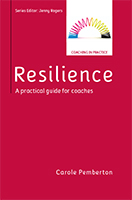
Sheryl Sandbergs new book ‘Option B’ has received wide attention because of her profile as COO of Facebook, but its’ real importance is that she has brought into the open a universal experience that receives little attention, that of grief at work. In a society that looks to massage grief into invisibility after the immediate aftermath of a death, she shares how the loss of her husband impacted on every part of her life: from suddenly becoming a single parent, to dealing with the demands of her role when her brain was overwhelmed with the weight of loss. She shatters the myth that we pick up where we left off once the funeral is over, and speaks openly of her lack of focus, her frequent tears, and her memory lapses. Her colleagues were generous in their support, often the bereaved perceive their colleagues as less than supportive.
They are silent for fear of saying the wrong thing. They are embarrassed as to how they will deal with the emotions of a colleague so avoid the topic, or offer a mundane expression of empathy ‘I’m sorry for your loss”, before moving onto business. They ask ‘how are you?’, as though there can be an authentic answer to describe the reality of what the person is experiencing. As the saying goes, “Other than that, how was the play Mrs Lincoln?” The offer is made,”is there anything I can do?” putting the onus on the person to define an appropriate action, knowing the one action they want, the return of their loved one cannot be delivered.
This book will be read because of Sandberg’s career success, but her experience is no different from any other employee, so what can we all take from it to normalise both loss and responses to loss at work.
- There is no way of knowing if you are saying the right thing, but it is worth taking the risk of asking the person how they are today. It acknowledges that reactions change day to day, while the bland, ‘how are you?’, invites the platitude ‘Fine’, that both parties know is a lie.
- Not naming the elephant in the room of the death of a partner, parent, child or even pet, does not make it easier for the bereaved. It simply makes them feel there is something shameful in the death of someone they love.
- Don’t ask if there is something you can do – offer to do something.
- There is a fine balance between offering to take on work for a grieving colleague and their feeling diminished by the off. Check in if it would be welcome if you took on a meeting, delivered a presentation, took on an assignment to reduce their workload – or will simply compound their sense that their brain has deserted them.
- Don’t offer reassurance ‘time is a great healer’, two years on you’ll have moved on or once you’ve worked through the Kubler Ross grief cycle you’ll be fine. Grief is not a programme to be completed, it is a set of states that the individual will revisit for as long as it takes.
- Don’t assume your responses to loss will be theirs. Better to be interested in their response to their loss than to see yours as of interest to them (at least in the early stages it won’t be).
- Give affirmation of what they are doing well at work, as they will be focussed on what feels strange or meaningless, what they have forgotten and when they could not focus.
Most centrally, treat them as the person you have always known. They do not have a disease, but grief is a large hole in a person. That hole will never disappear, but over time they will start wrapping layers of life around it. Those layers are paper thin at the beginning, bu with time they will become thick enough to protect them and to enable them to create a different life.
Sheryl Sandberg’s Option B: Facing Advertity, Building Resilience and Finding Joy is published by Penguin Random House

